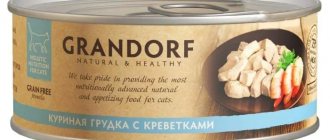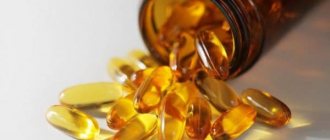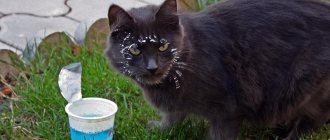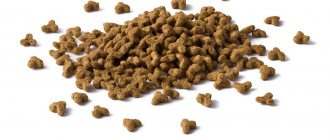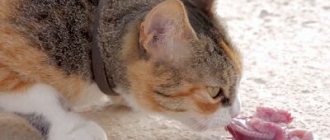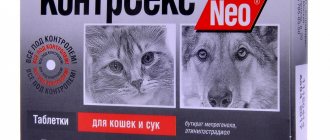At first glance, it seems that the division of food into dog and cat food is arbitrary and more like a marketing ploy. At first glance, this is indeed the case. Both cats and dogs are given a similar set of foods for their diet.
This is due to the natural diet, where 90% of products are identical to each other. But what is good for both with natural nutrition is that there are a number of differences in the composition of dry or wet food.
The cat is an obligate predator
Both cats and dogs are carnivores, which means that the basis of their diet should be meat. In nature, they would feed on small animals, eating not only muscle meat, but also entrails, bones and cartilage.
However, in the process of domestication, dogs adapted to eat what humans offered them, and these were not always meat products, more often just leftovers from the human table. Even hunting dogs, trained to track and pick up game, end up not eating it themselves, but presenting it to the owner. Cats in village households were fed from time to time, thanks to which they always knew how to get food themselves. Fortunately, there are enough mice and birds everywhere.
As a result, modern dogs are better adapted to dietary diversity, in particular to the absorption of carbohydrates. Cats still remain strict meat eaters and do not tolerate plant foods well. Therefore, food for them should contain more protein components and less carbohydrates.
According to GOST “Feed for non-productive animals”, the lower threshold for crude protein content in cat food is:
- 30% - during the period of growth and reproduction;
- 26% - for adult animals from which they do not plan to produce offspring.
For dogs, these figures are significantly lower: 18 and 22%, respectively. Please note that these figures reflect only the extreme limit of the norm necessary for survival, and in order to fully cover the cat’s need for protein, it should be approximately 35–40% in dry food.
Animal protein
The animal protein content in ready-made industrial diets for dogs is lower than for cats. Over several tens of thousands of years of living next to humans, dogs have adapted to assimilate small amounts of plant food and grain, while cats were and remain obligate predators, adapted to eat only meat. Therefore, if there is not enough animal protein in the food, this affects the functioning of the pet’s muscles and internal organs, since protein is the main building material for all cells of the body.
Not all proteins are equally beneficial
Sources of protein are not only meat, fish, eggs, but also plant raw materials, which “thrifty” producers sometimes use. By adding soy, corn and wheat gluten to the feed, they bring its composition to the minimum acceptable protein levels mentioned above. At the same time, the digestibility of such products and their benefits leave much to be desired.
Proteins in plants do not contain the required amount of amino acids necessary for cats: arginine, tryptophan, lysine, methionine and, of course, taurine. The consequences of such a deficiency can be fatal: for example, a cat whose body does not receive taurine for a long time is at risk of hypertrophic cardiomyopathy, retinal degeneration, and then complete blindness. A lack of amino acids has a detrimental effect on the process of conception, gestation and intrauterine development of kittens.
Most complete cat foods are additionally fortified with taurine, since the cat’s body, unlike a dog’s, is not able to synthesize this substance on its own. And it is not customary to add taurine to dog food: the amount contained in the meat components is already sufficient.
General recommendations for feeding cats with industrial food
All industrial feeds have advantages and disadvantages. The first usually outweighs the second due to lack of time from the owners. An alternative to food is a natural diet, that is, regularly preparing food for your pet.
Industrial cat food is divided into classes and types:
- Economy, premium (everyday), super-premium, holistic.
- Wet, semi-moist, dry food.
Super-premium and higher class cat food contains all the important nutrients, vitamins and microelements. In this case, the owner can feed the cat dry food, alternating with semi-moist or wet food (of the same brand and line).
Economy and premium classes are not fully fortified and may contain preservatives. At the same time, premium food is considered everyday food, that is, suitable for regular feeding of healthy animals. Economy class is a dangerous line, produced with the expectation of illiterate owners. Vivid advertising and a relatively attractive price play a significant role. Trying to do the best, owners literally sacrifice the health of their pets... although if the owner reads the ingredients of the product, then the risk is quite conscious.
The modern range of food allows you to choose a balanced diet for any, even the most picky pet. At the very least, the cat will definitely not refuse to eat wet food or pates. Some difficulties may arise with the selection of dry food, since it is not so fragrant.
Does a cat need fat?
Owners are wary of fat in their cat’s diet, especially if the cat is prone to obesity. But in reality, fat alone will not make a predator fat, just as greens do not make herbivores green. An animal gains excess weight not because of specific macronutrients, but because the total caloric content of the diet is exceeded. If a high-fat food contains a minimum of carbohydrates and is dosed correctly, the cat will be in excellent shape.
Domestic dogs have partly adapted to extract energy from carbohydrates, so dog foods sometimes contain less animal fat and more grains. By consuming such a product regularly, cats will receive less of the essential arachidonic acid, which affects the health of the reproductive, gastrointestinal and other systems. In addition, vitamin A (retinol) is fat-soluble, and if it is not fully absorbed by the cat’s body, it will lead to decreased vision, hair loss, and in the case of kittens, growth retardation.
General information
In practice, if both a cat and a dog live in the house and are not fed in isolated areas, it is not uncommon for pets to calmly eat from each other’s bowls. Such cases are especially frequent if the food is of high quality and attracts both pets with its taste.
In such cases, the owner should be especially careful about the compatibility of dog food with the cat’s stomach.
Reasons why a cat doesn't eat as much from a dog's bowl:
- Current cat food is more sparse in content and the cat eats dog food because it suits her better.
- The cat is missing a specific ingredient in the dog's food.
- Dog food is fresher than what is currently offered to the cat.
Will dog food harm a cat?
If such nutrition is episodic, nothing bad will happen. By encroaching on the dog's bowl, the cat simply wants to emphasize its importance and authority. A few grains of food will not instantly make him sick, nor will he bark or howl at the moon. However, this practice should not be made permanent.
The differences between cat and dog food are significant, primarily due to the difference in the content of proteins, taurine, and fatty acids. A lack of these nutrients will sooner or later lead to a deterioration in the pet’s quality of life and health problems.
Details
Causes
On the part of the owner, there are also reasons that make you think about changing cat food to a dog equivalent:
- Dog food is easier to buy.
- The price per kilo is often lower than the price of cat food.
- There are often promotions on dog food.
But all these benefits are superficial. A cat can eat dog food with great pleasure, but problems with such food will manifest themselves over time. Any diet has a cumulative effect and sooner or later it will give its results and all the shortcomings will appear.
What happens if you feed a cat dog food?
- Obesity. Dogs require more carbohydrates than cats. As a result, the calories unspent during the day simply settle in the cat’s fatty tissue, gradually leading to excess weight and obesity.
- Lack of protein. Cats require more protein in their food than dogs. This is due to the fact that a cat is a predator, and a dog is an omnivore. Protein imbalance in the diet has a negative effect on the building of muscle tissue in cats.
- Deterioration of vision and disruption of the heart. The most important component of wet or dry cat food is taurine. This is a vital amino acid for the cat's body. It is simply not found in dog food, since this component is useless to dogs.
- Malfunctions of the gastrointestinal tract. It's no secret that dogs eat more plant fiber than cats. As a result, dry food also contains more of them, and often contains grains and vegetables that are beneficial for dogs and harmful for cats.
- Skin diseases. Dog food has a fat component that is not suitable for vitamins. Cats may be deficient in a number of nutrients that dogs do not need.
- Anemia. Dogs should not eat chicken eggs, for them it is a source of unnecessary cholesterol, but eggs, on the contrary, are beneficial for cats, as they contain many amino acids. Therefore, the composition of dog food often differs from cat food precisely in the set of amino acids.
- The ratio of vitamins for cats and dogs in food has different norms, which leads to a general imbalance in the animal’s nutrition.
- Not all components of dog food are digestible by cats. Even super premium dog food may not be digested properly in a cat's stomach.
IMPORTANT: dogs should not be fed cat food for the same reason that the composition is different.
It must be remembered that all of the above problems only apply to healthy cats who eat food from a dog bowl, which in turn is not intended to solve specific problems.
All the troubles from inappropriate nutrition are intensified if the cat has health problems, and the dog food has a special purpose. In such cases, the imbalance in nutrition is even more pronounced and the negative consequences appear faster and in a more serious form.
It's okay if your cat occasionally eats a couple of dog food pellets. On a non-permanent basis, such weakness can be tolerated. You should not feed your cat dog food on a regular basis.
Cases when you can give your cat dog food
- Wet food in the amount of 1 teaspoon can be given in cases where the cat refuses to eat its food and persistently climbs into the dog’s bowl. By gradually reducing the dose, you will wean the cat from eating food that is not its own. At the same time, the feeding places of both furry household members should be distinguished.
Dry dog food for small breed dogs can be given to a cat during training. But this method should only be used if the cat already knows what a particular dog food is and she likes it much more than her usual diet.
- If the food is monocomponent holistic, then in rare cases a large can can be divided between a dog and a cat.
IMPORTANT: if your cat has a weakness for dog food, then you should allow her to eat it no more than once every 2 weeks. Or add a few granules to a bowl of cat food so that the animal eats it for company, but again, no more than once a week.
Differences between foods
To understand how harmful dog food can be to a cat’s health, you should know how the food differs from each other:
- Dog food contains less protein. An insufficient amount of this component will negatively affect the cat's body.
- “Dog” food is enriched with a high amount of plant components, which are very slowly and poorly digested by the digestive system of cats.
- Cat food is rich in vitamin A, which is essential for the normal functioning of the entire body. However, there is not enough of it in finished products for dogs.
- There is no taurine in the industrial product for dogs. This substance is an amino acid, without which the musky’s body will not be able to work normally and smoothly. Taurine takes part in the process of food digestion, blood clotting, and regulates the functioning of the central nervous system.
- Calorie content. This figure is much higher for cat food, since cat food contains more fat and protein. Dogs need more energy, and carbohydrates serve as its source.
- Granule size. Cat food has a much smaller kibble size. Eating large pieces will negatively affect the condition and health of your teeth. Large granules will complicate the digestive system and cause the cat to choke.
If a cat eats dog food just once, nothing bad will happen.
However, the regular presence of this type of industrial food in a cat’s diet will have an extremely negative impact on its health.
Reviews
Margarita, Yaroslavl
“When we got the puppy, he kept getting into the cat's bowl. At first it was funny and amusing, but then we took it seriously. They started feeding Barsik in a separate room behind a closed door, and put the remaining pellets in a separate bag.”
Maria, Kursk
“I didn’t know that canned cat food shouldn’t be given to dogs. Only after the allergy appeared did I realize my mistake. Fortunately, we noticed the problem in time and switched Eva to a diet designed for her breed.”
Taurine and arginine
These are essential amino acids for the cat’s body; if they are deficient, serious and dangerous conditions develop not only for the health, but also for the life of the pet. Taurine is contained in large quantities in the retina of a cat’s eye, and therefore, with its chronic deficiency, vision primarily suffers, and over time the animal inevitably goes blind. In addition, taurine is extremely important for the cardiovascular and nervous systems, blood clotting, reproductive and gastrointestinal function, and much more.
Arginine is no less important; if it is deficient, ammonia accumulates in the blood, which can have fatal consequences.
How to stop a dog from eating cat food
A dog may persistently demand a forbidden treat for a long time. In some cases, she refuses to eat and shows her indignation in every possible way. The owner’s task is not to be led by pity and strictly adhere to the following recommendations:
- feed animals separately from each other;
- remove cat food out of reach of the dog;
- maintain a daily routine, especially in matters of nutrition;
- exclude all harmful foods from the diet;
- increase physical activity and walks in the fresh air;
- when using industrial feed, give preference to quality products;
- natural porridges must be prepared daily; stale food can provoke a desire to take the cat away.
Useful article: Puppy feeding schedule by month
The right decision would be to visit a veterinarian. This will help rule out factors associated with undiagnosed diseases and assess the dog's condition.
Expert opinion
Anna Abramenko
An avid dog lover. Experience in veterinary medicine since 2009.
Ask a Question
You should not suddenly change your pet’s food if he is used to eating cat food. This will lead to justified grievances and refusal to eat. The content of the prohibited product should be gradually reduced by mixing it with high-quality dog food.

